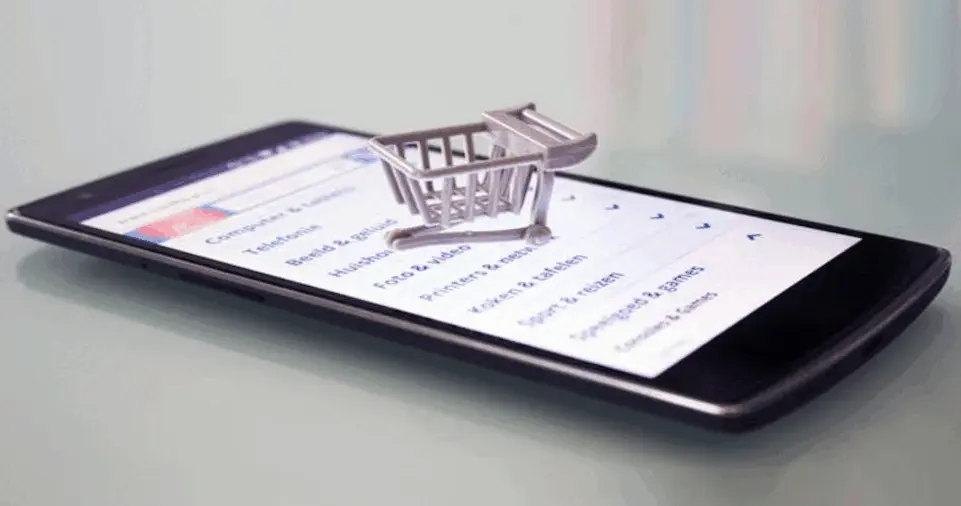In today’s rapidly advancing world of technology, the demand for high-quality gadgets and electronics is skyrocketing.
Whether it’s a smartphone, laptop, smartwatch, or other tech-related devices, consumers are constantly looking for the best products to enhance their digital experience.
However, with this surge in demand comes a rise in counterfeit tech products flooding the market.
Fake tech products are not only a waste of money but can also pose serious risks to users, including safety hazards, poor performance, and data security issues.
Counterfeit electronics can look strikingly similar to their genuine counterparts, making it increasingly difficult for consumers to distinguish the real from the fake.
In fact, many people unknowingly purchase counterfeit products due to clever marketing, low prices, and misleading product listings.
This detailed guide aims to help you identify fake tech products before making a purchase.
Whether you’re shopping online or in a physical store, there are specific steps and red flags you can look for to ensure you’re investing in a genuine product.
From verifying sellers to checking product details, this article will equip you with the knowledge you need to make informed tech purchases and avoid costly mistakes.
So, let’s dive into the world of counterfeit tech and learn how to spot the fakes with confidence!
How to Identify Fake Tech Products Before Buying: 10 Key Steps

Check the Seller’s Reputation: A Critical First Step
Before purchasing any tech product, the first step is always to verify the reputation of the seller.
This step is crucial because counterfeit products are often sold by sellers who do not have a verified presence or credible history.
Research the Seller’s Background
Start by researching the seller’s name, store, or website.
If you’re purchasing from an online marketplace such as Amazon, eBay, or AliExpress, make sure to check customer reviews, ratings, and seller feedback.
Genuine sellers usually have high ratings and a solid history of customer satisfaction.
On the other hand, fake sellers tend to have little to no reviews, or their reviews are suspiciously positive.
Look for verified sellers or official retailers for tech brands.
If the seller claims to be an authorized distributor but doesn’t provide any credentials or company details, this could be a warning sign.
Red Flags to Watch For
- Lack of Contact Information: Fake sellers tend to have generic or incomplete contact details.
- Negative Reviews or Complaints: Search for the seller’s name along with terms like “fraud” or “scam” to see if other buyers have had negative experiences.
- Unverified Social Media Accounts: If the seller’s social media presence is nonexistent or looks unprofessional, be cautious.
Inspect Product Packaging: Does It Look Authentic?
One of the easiest ways to spot a counterfeit tech product is by examining its packaging.
Tech brands typically pay great attention to packaging design, ensuring high-quality printing, branding, and presentation.
Look for Typos and Printing Quality
Check the product packaging for any signs of poor printing, such as blurry text, wrong fonts, or misspelled brand names.
Legitimate tech brands carefully proof their packaging, so any errors are an immediate red flag.
Look closely at the logos, fonts, and overall design. Fake products may have distorted logos or printed text that feels off.
Examine the Packaging Materials
Counterfeit products often come in cheap, flimsy packaging. The materials may feel lower in quality than the official packaging, and the design may look rushed or hastily put together.
Genuine packaging is typically robust, while fake packaging might feel weak and easily damaged.
Security Seals and Labels
Many authentic tech products come with security seals, holograms, or tamper-proof stickers.
Examine these seals carefully to see if they are authentic. Counterfeit packaging might feature seals that are easy to peel off or ones that don’t match the brand’s typical security labels.
Review the Product Details: Does It Match the Official Specifications?
It’s important to know the specifications of a product before making a purchase.
Fake tech products often boast features that are either lower than the stated specs or completely exaggerated.
Compare to Official Specifications
Take the time to cross-check the product specifications on the manufacturer’s official website.
Pay attention to key details like the processor type, camera resolution, battery life, display quality, and features such as waterproofing or wireless charging.
If the seller is offering a product with specifications that are too good to be true, it could indicate a fake.
Verify Performance Features
Fake products often underperform compared to the official versions.
For example, a counterfeit smartphone might have a low-resolution camera, a weaker processor, and a shorter battery life than what’s advertised.
If you have the opportunity to test the product in person, make sure to examine how well the features work.
Serial Numbers and Product Codes
Most genuine tech products come with a serial number or a unique product code that can be verified.
Fake products often lack serial numbers, or they may use fake serial numbers that don’t match the brand’s records.
You can enter the serial number on the brand’s website or customer service portal to verify its authenticity.
Price: A Key Indicator of Fakes
Price is often the most enticing factor for consumers. While discounts can be great, an abnormally low price is a major red flag when buying tech products.
Too Good to Be True?
If the price is significantly lower than what you would typically pay for the product, it’s likely too good to be true.
Genuine tech brands rarely offer steep discounts outside of special sales events. If a product is priced far below market value, there’s a strong chance that it’s a counterfeit.
Compare Across Multiple Retailers
Before purchasing, compare the product’s price across different trusted retailers and authorized resellers.
If one website is selling the product at a much lower price, investigate further.
Discounts that seem too generous may indicate a fake product or an attempt to lure customers into a scam.
Test the Product: Hands-On Evaluation
If you have the opportunity to test the product physically, this is the best way to identify a fake.
Authentic tech products often come with a certain build quality and feel, which is difficult for counterfeiters to replicate.
Examine the Build Quality
Genuine tech products usually have a premium feel, with materials like metal, glass, or high-quality plastics.
Fake products may feel cheaper, with plastic components that feel flimsy or poorly put together. Check the weight, texture, and sturdiness of the product.
Verify the Functionality
Test the product’s core features to ensure they work as advertised.
For example, if you’re buying a smartphone, check its touchscreen responsiveness, camera quality, and battery life.
If something feels off or doesn’t work as expected, you may be dealing with a counterfeit.
Look for Certifications and Warranty Information
Most reputable tech products come with proper certification and warranty details.
Counterfeit products often lack these certifications, which can be a sign that they aren’t up to industry standards.
Look for Regulatory Marks
Check for official certification logos such as CE (Conformité Européenne), FCC (Federal Communications Commission), or UL (Underwriters Laboratories) marks.
These certifications indicate that the product meets safety and quality standards.
Fake products often lack these important marks or have poorly printed versions of them.
Warranty and Return Policy
A genuine tech product almost always comes with a warranty or return policy.
If the product you’re buying lacks any warranty details or the warranty seems vague or nonexistent, this could be a sign of a fake.
Check the manufacturer’s website for warranty information and ensure the product’s warranty is valid.
Use Online Tools and Resources
The internet is a valuable resource when it comes to identifying fake tech products.
With just a little effort, you can find online tools that help verify product authenticity.
Check Reviews and Unboxings
Search for product reviews, video unboxings, and customer feedback on trusted tech websites.
Many tech enthusiasts and reviewers go into great detail about the product’s features, and watching unboxing videos can help you spot potential fakes.
Reverse Image Search
You can use tools like Google Reverse Image Search to verify if the product images used in the listing are taken from legitimate sources.
If the images appear on multiple untrustworthy websites or seem to be stolen from reputable retailers, proceed with caution.
Know the Brand: Familiarize Yourself with the Product Line
One of the best ways to avoid counterfeit tech products is to familiarize yourself with the brands you trust.
Research the official product lines and features to understand what authentic products should look like.
Recognize the Brand’s Signature Design
Each tech brand has a signature design language.
Whether it’s the way a smartphone’s camera module looks or how a laptop’s keyboard is laid out, these subtle design details are often difficult for counterfeiters to replicate.
Know Common Counterfeit Brands
Certain popular tech brands are frequently targeted by counterfeiters.
For example, Apple, Samsung, and Sony products are often faked due to their high demand.
Familiarize yourself with the brand’s trademarks and signature features to help spot a fake.
ALSO READ:
Conclusion: Stay Informed and Shop Smart
Buying tech products can be an exciting experience, but it’s essential to be cautious and vigilant.
By following the tips in this guide, you can ensure that you’re purchasing genuine products that meet your expectations.
From checking seller reviews and inspecting product packaging to verifying specifications and warranties, being informed is your best defense against counterfeit products.
Remember, if something feels too good to be true or seems off in any way, trust your instincts and investigate further before making a purchase.
In the end, being cautious and knowledgeable will help you avoid the frustration and disappointment of counterfeit tech products, ensuring you invest in quality and authenticity.







